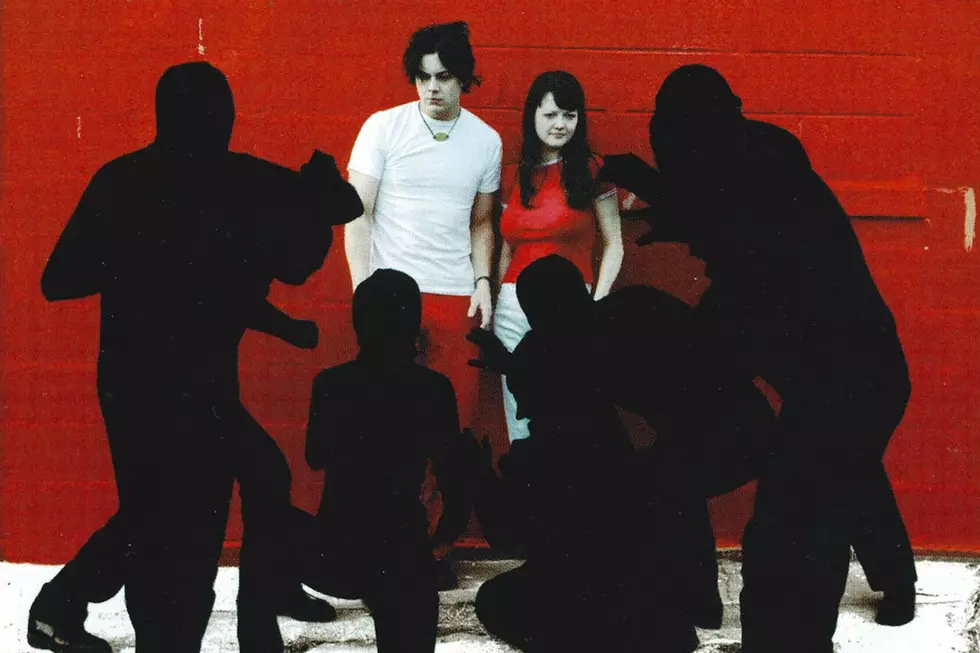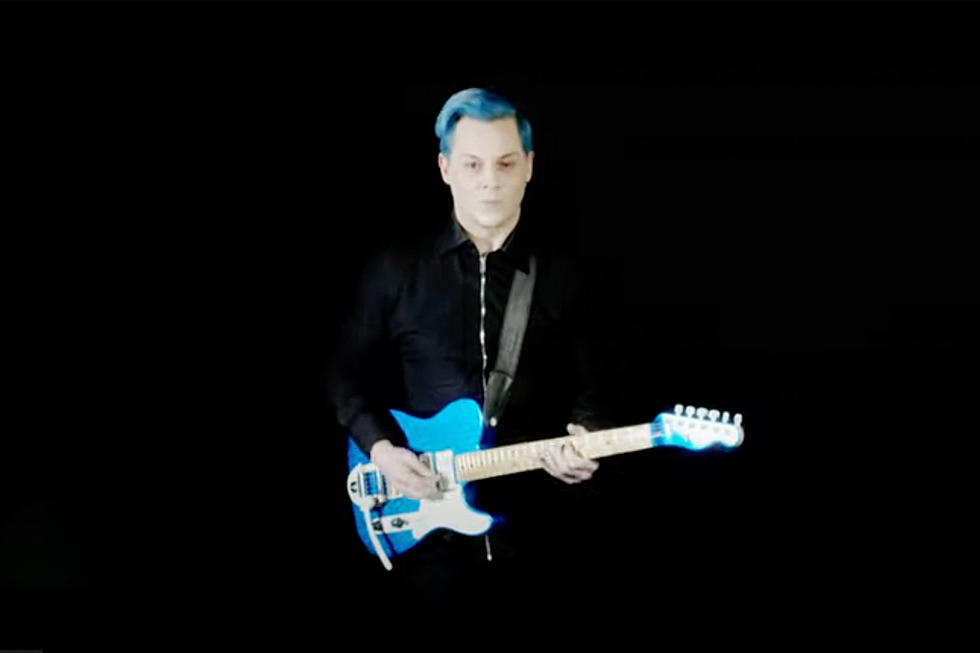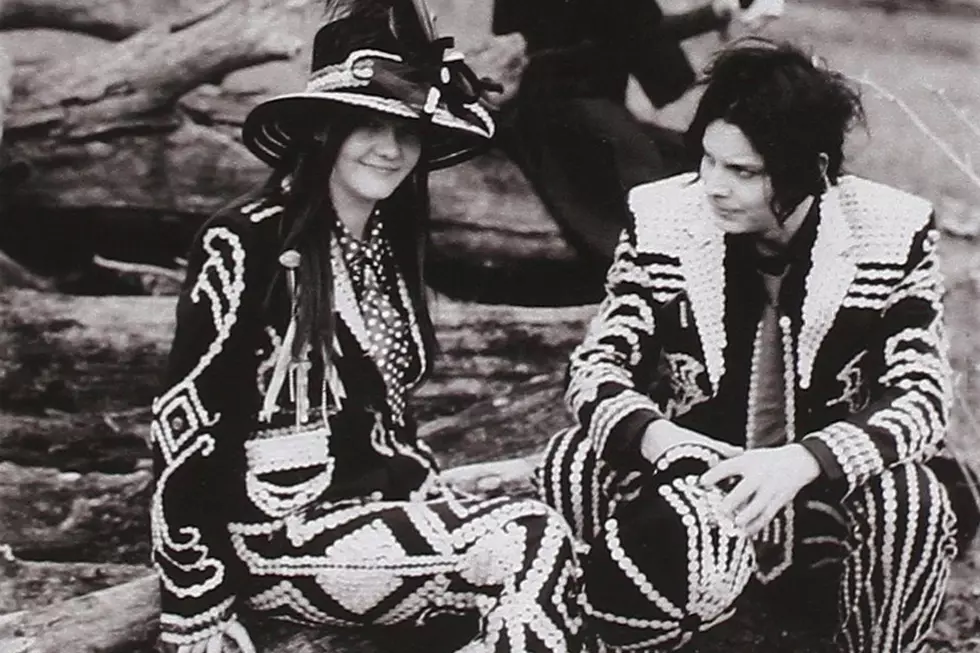
20 Years Ago: Why White Stripes Made ‘White Blood Cells’ ‘as Raw As Possible’
On July 3, 2001, the White Stripes released White Blood Cells, the album which would launch them to mainstream worldwide success.
The duo had spent their early years developing a passionate fanbase in their hometown of Detroit. Rousing performances at the local clubs had helped the White Stripes develop a reputation. Their self-titled 1999 debut album was a raw, unfiltered rush of frantic blues rock. Its follow-up, 2000’s De Stijl, found the group further forming their sound.
“There's definitely a childishness in it,” Jack explained to Willamette Week in 2000, while trying to describe his band’s style. “From Meg's standpoint, the drumming is real primitive and I really love that. My voice, I think, sometimes sounds like a little kid. You see that approach in a lot of great bands, [for example] Iggy Pop throwing tantrums on stage. Everybody's still that same person they were when they were young — at least they still want to be. They still want to have that freedom.”
Tours alongside Pavement and Sleater-Kinney took the White Stripes beyond the Motor City. Music fans and media alike were suddenly taking notice. As hype surrounding the band continued to grow, they retreated to Memphis to record a third album. To say that the sessions were a whirlwind would be an understatement.
“There were probably only three real days of recording,” Jack revealed to the Metro Times. “We really rushed the whole album, to get that feel to it, a real tense thing coming out of it.”
Watch the White Stripes Video for 'Dead Leaves and the Dirty Ground'
Engineer Stuart Sikes told the Detroit Free Press that “we just set up and they started going. Jack knew what he wanted. Meg didn't really think they should be recording: She thought the songs were too new. Jack pretty much knows what he wants, has a really good idea what he's going for.”
Material for White Blood Cells was culled from a variety of sources. Some tracks were brand new, while others were leftovers from Jack’s previous band, 2 Star Tabernacle. “It was cool because a lot of things had been sitting around for a long time, stuff I had written on piano that had been just sitting around not doing anything,” Jack told the Metro Times. “And it was good to put them all together at once, put them all in the same box and see what happened.”
Jack warned Sikes “more than once not to make it sound too good,” the engineer told the Free Press. “Basically he wanted it as raw as possible, but better than if it was recorded in somebody's living room. He steered me that way, and I ran with it.”
The LP title and artwork would be reflective of the White Stripes' ascent to fame. “The name, White Blood Cells, for the album, is this idea of bacteria coming at us – or just foreign things coming at us, or media, or attention on the band,” Jack told the Metro Times. “It just seems to us that there are so many bands from the same time or before we started that were playing and are still playing that didn’t get this kind of attention that we’re getting. Is the attention good or bad?”
Watch the White Stripes Video for 'We're Going to Be Friends'
The results were met with critical acclaim: Uncut magazine compared the band to Led Zeppelin, while Pitchfork said the White Stripes “summon the Holy Spirit and channel it through 16 perfectly concise songs.” The New York Times argued that the band “made rock rock again by returning to its origins as a simple, primitive sound full of unfettered zeal."
White Blood Cells was initially released on the indie label Sympathy for the Record Industry, but demand soon exceeded the company’s limits. Major labels came calling, including V2 Records.
“This was the type of band that I found completely fascinating musically and conceptually,” Andy Gershon, president of V2, told the Free Press. “When you look at it — the whole "brother-and-sister" thing, dressed in red and white, really raw — I figured this will never get on the radio. But I didn't care about getting hits.”
Gershon’s instinct to sign the band was wise. However, his assumption that they wouldn’t have hits would be way off base.
Watch the White Stripes Video for 'Fell in Love With a Girl'
The lead single “Fell in Love With a Girl” quickly became an alternative-radio mainstay, while its groundbreaking video – made with Lego blocks and directed by future Academy Award winner Michel Gondry – earned heavy rotation on MTV.
Further gems included the fuzzed-out garage rocker “Dead Leaves and the Dirty Ground,” twangy “Hotel Yorba,” and the sweetly nostalgic “We’re Going to Be Friends.”
White Blood Cells would eventually sell more than a million copies in the U.S. Multiple outlets named it among the best albums of 2001 and (later) the top albums of the 2000s.
Through the excitement, media fanfare and being hailed rock’s latest savior, Jack stayed even keeled.
“In the end, it doesn't really matter,” he told the Guardian in 2003, “because I always think, in 20 years' time, the only thing that's going to be left is our records and photos. If we're doing something meaningful with those, that's what will live forever – so that's what's really important."
Jack White Albums Ranked Worst to Best
More From Alt 95.7









